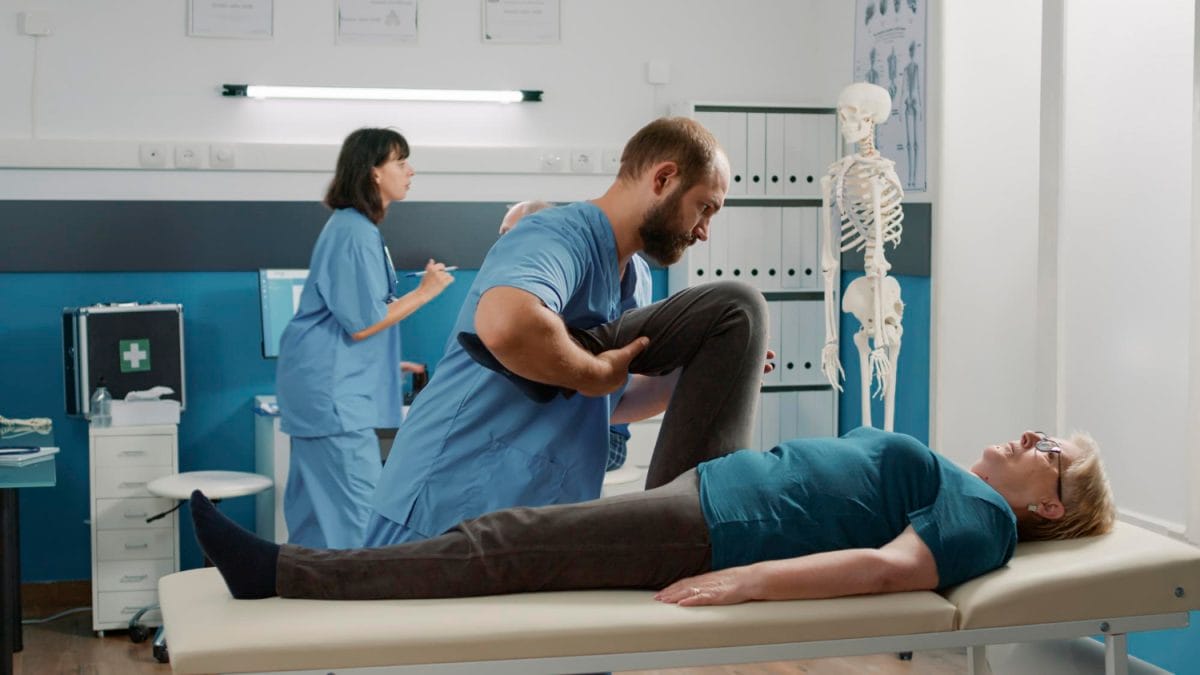Total hip replacement therapy, or arthroplasty, is a major surgical intervention involving the removal of the damaged or degraded ball-and-sock hip joint and replacing it with an artificial hip joint.
Total hip replacement therapy, or arthroplasty, is a major surgical intervention involving the removal of the damaged or degraded ball-and-sock hip joint and replacing it with an artificial hip joint.
Patients can expect to spend 2-5 days in hospital, undergoing the procedure. The operation itself takes around 60-90 minutes. However, the benefits can last up to a lifetime – depending on future wear and tear and the type of replacement hip joint.
Surgeons aim to return patients to normal movement and activity, free from pain. That can take several months of post-operative recovery. Below, we detail the hip replacement surgery recovery timeline.
Post-Hip Replacement Surgery Recovery Timeline
Immediately After Surgery
After the surgery is completed, patients are usually taken to the recovery room. Here, nurses and doctors closely monitor their vital signs, manage pain, and monitor their recovery. Although small, all operations carry a risk of complications like infection or blood clots; therefore, some blood tests may be performed.
It’s common for patients to experience grogginess and discomfort. Mobility will be limited, and patients will require assistance with basic movements.
The Following Days
At Kardiolita Hospital, we’re keen to see patients moving as soon as possible. We manage pain levels by gradually introducing sitting, standing, and walking with support. Physical therapy can start within a day of surgery, and we teach patients to identify the signs of infection and other issues.
If there are no other problems, patients can expect to be discharged within a few days of surgery. However, you won’t be discharged until the doctor is confident in your ability to perform activities of daily living (ADLs), e.g., showering, getting out of bed, or putting on socks and shoes.
The First Three Months
In the first three months after hip replacement surgery, patients can expect:
- Regular Physical Therapy: Key for regaining strength and mobility.
- Activity Restrictions: Limitations on certain movements and weight-bearing activities.
- Progress Monitoring: Regular follow-up appointments.
- Improvement in Pain and Mobility: Most patients experience significant improvements.
This period is marked by a substantial improvement in mobility. Patients commonly report feeling stronger and less pain after around 4-6 weeks. Still, it’s important to continue with physical therapy as you adjust to your new hip.
Continuing Recovery
Beyond three months, patients usually resume their normal activities. Even better, they can often return to activities they’d previously enjoyed, but that degenerative joint disease had prevented them from participating in. For example, patients can now play golf, tennis, and other sports.
Of course, several factors dictate the speed of your recovery, including:
- Patient’s age and health
- Adherence to post-surgery instructions
- Pre-existing medical conditions
- Pre- and post-surgery activity and nutrition
- Quality of surgery and implant
Hip Replacement Surgery Abroad at Kardiolita Hospital
Recovery is always a major question when discussing hip replacement surgery abroad. Our patients see that compared to the hip surgery price in Ireland, the cost at Kardiolita Hospital is less than a tenth of the cost. However, they wonder if it’s safe to travel after an operation.
Yes, it is! Thousands of patients routinely travel to Lithuania for hip replacement operations. During the immediate recovery period, our team work tirelessly to provide you with the necessary support to monitor for any complications. That’s why we recommend staying for 6 nights in hospital after the surgery.
Experience hip mobility at a fraction of the hip surgery price in Ireland. Register today!

